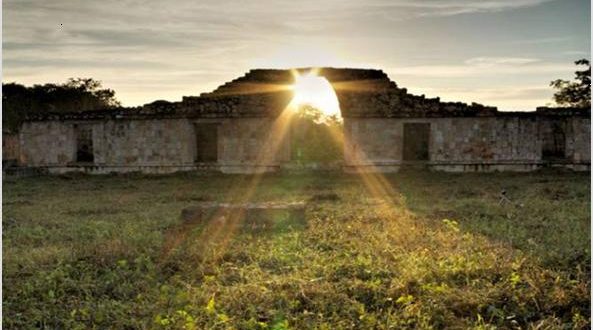“Whoever lives sees, but whoever travels sees more” and today I write about a site that allows us to see other perspectives of an ancestral worldview.
Although it is part of the so-called “Ruta Puuc” which image is often associated with the archaeological site of Uxmal and the arch of Labna; Oxkintok cradle of this refined and elegant Mayan style, is one of the less known archaeological, and not many tourists who venture into this area of the state of Yucatán.
Oxkintok is located in the municipality of Maxcanú, state of Yucatán. Its name comes from the Yucatec Maya: ox, three; kin, sun or day and tok, flint. There are many historical records that have been recorded around this ancient city, for example Oxkintok is a Mayan settlement that shows a very long period of occupation (300 BC-1000 AD).
The archaeological evidence tells that Oxkintok had political and religious importance along with other pre-Hispanic cities such as Edzna, Dzibilchaltun and Izamal. On the other hand, Oxkintok has Teotihuacano features that indicate the exchanges they had with Central Mexico, besides, Oxkintok is the oldest pre-Hispanic Puuc settlement.
There are two main elements that give the archaeological site of Oxkintok its own identity and make it even more interesting in the eyes of cultural tourism:
First, I have to refer to the Tzat tun tzat (in Mayan language, it means “to get lost”). This structure is unique in its kind and the local people know it as the “Mayan labyrinth”. It has three levels that are superimposed for which there is only one entrance, intricate passageways and an altar, which is why it is associated with rituals. So, Oxkintok features the only pre-Hispanic labyrinth that still stands today in all of the Americas.
The second element is no less peculiar, it is of the archaeoastronomic phenomena that occurs during the spring equinox. This happens every year between March 19 and 21.
This type of archaeoastronomic events take olace in several spots within the Yucatan, such as Chichen Itza, Uxmal, Dzibilchaltun, Labná, etc. The Mayan sun god Ah Kin is also present in Oxkintok. The sun light passes right in the middle of a false Mayan arc, and this served as a signal to announce the beginning of the planting season.
Source: entornoturístico.com



